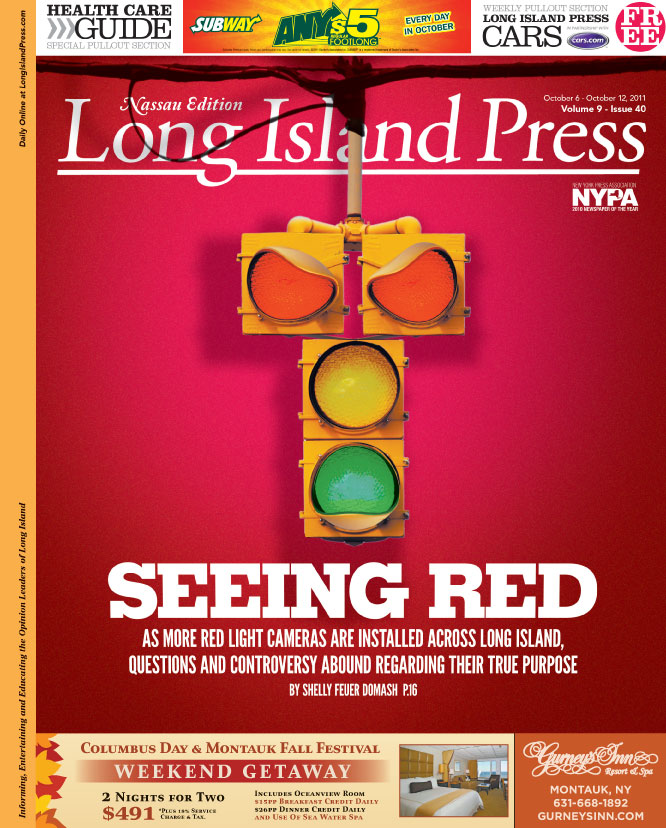
SEEING RED
 As more and more local and state governments approve red light cameras, so do more and more grassroots groups across the country form to protest their installation. And many of them have gotten positive results.
As more and more local and state governments approve red light cameras, so do more and more grassroots groups across the country form to protest their installation. And many of them have gotten positive results.
Nationwide, approximately nine states and 12 cities have passed laws banning the use of red-light cameras. In many areas, the debate comes down to whether citizens have the legal right to vote on these initiatives and tell their elected officials how they feel about these new cameras. Critics say that if the politicians can make their own decisions on the new cameras, their choices are all too often based on campaign contributions and pressure from lobbyists funded by red-light camera companies. Among other gripes, opponents accuse the camera companies of being akin to drug dealers, offering officials all sorts of incentives to sign on. Then, they argue, once a municipality gets a taste of the revenue stream, they can never have enough, even if it means adding more and more cameras.
“Cameras are the crack-cocaine for cities. Once they get hooked on the money, they can’t get off,” says Tim Eyman, initiative activist with Voters Want More Choices, in Mukilteo, Wash.
Should Long Islanders one day wish to end this growing red-light camera habit—through a referendum, perhaps—they will undoubtedly face a tough battle.
Gary Biller, executive director of the National Motorists Association, charges that ATS uses an extensive and expensive public relations campaign—sometimes utilizing questionable practices and deceptive tactics—to get their way. Those allegations are echoed by groups from California to Missouri.
“ATS finances what you can gently refer to as a front group for themselves,” he says. “It is called the National Coalition for Safer Roads. They seem to be very adept at issuing a whole myriad of press releases in favor of red light cameras, particularly when the tide seems to be turning against red light cameras.”
The former head of the lobbying group Storm King Strategies LLC, which specialized in the transportation industry, is now the executive director of the National Coalition for Safer Roads. On its website, the group lists a myriad of supporters, from government agencies to police departments to individual police chiefs. Linking them all is ATS.
It’s this cross-pollination of red-light camera manufacturers, lobbyists and advocates without their full disclosure that is one of the controversial tactics irking opponents, something they say is occuring across the country.
ATS spokesman Charles Territo tells the Press the company is the leading provider of red light cameras, with 300 communities of the 650 that utilize them. He admits that ATS is a supporter of the site Biller mentioned above.
He asserts, however, that ATS also has many other supporters.
Recently, ATS suspended one of its executives after it was found that he was filling blogs with pro-red-light camera postings and urging residents to contact their local officials in support of them. He did so under a false name.
“The former vice president with ATS was caught astroturfing a number of websites around the country with pro camera comments,” explains Biller. “He was blanketing the Internet. It is a phenomenon where you blanket the comment section of internet articles with cookie cutter comments that were their talking points. That issue itself wasn’t so bad, but he was putting himself under another name and indicating he was a local resident in some incidences.”
ATS tells the Press they eventually fired the executive; critics wonder what would have happened if he wasn’t caught.




